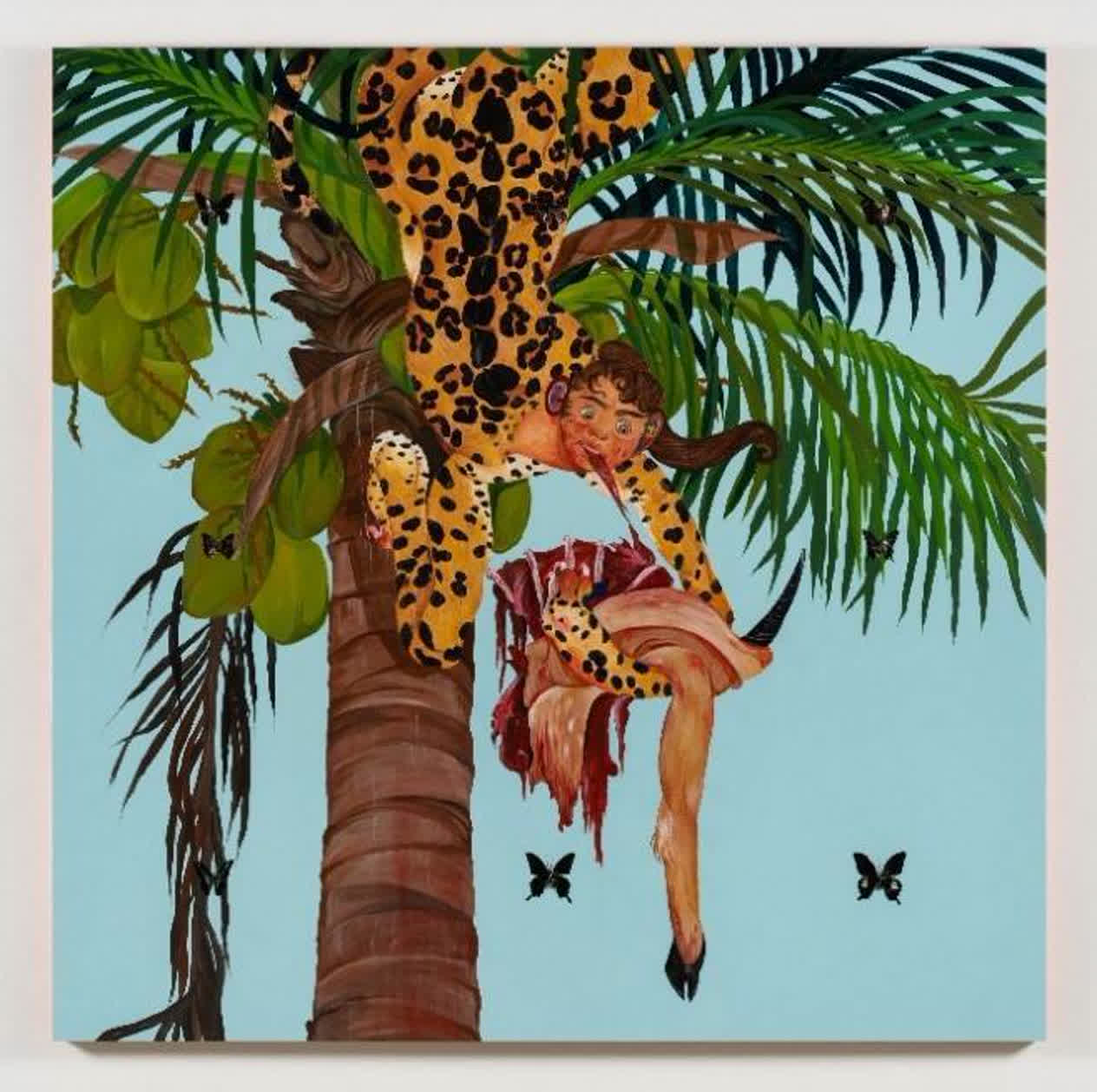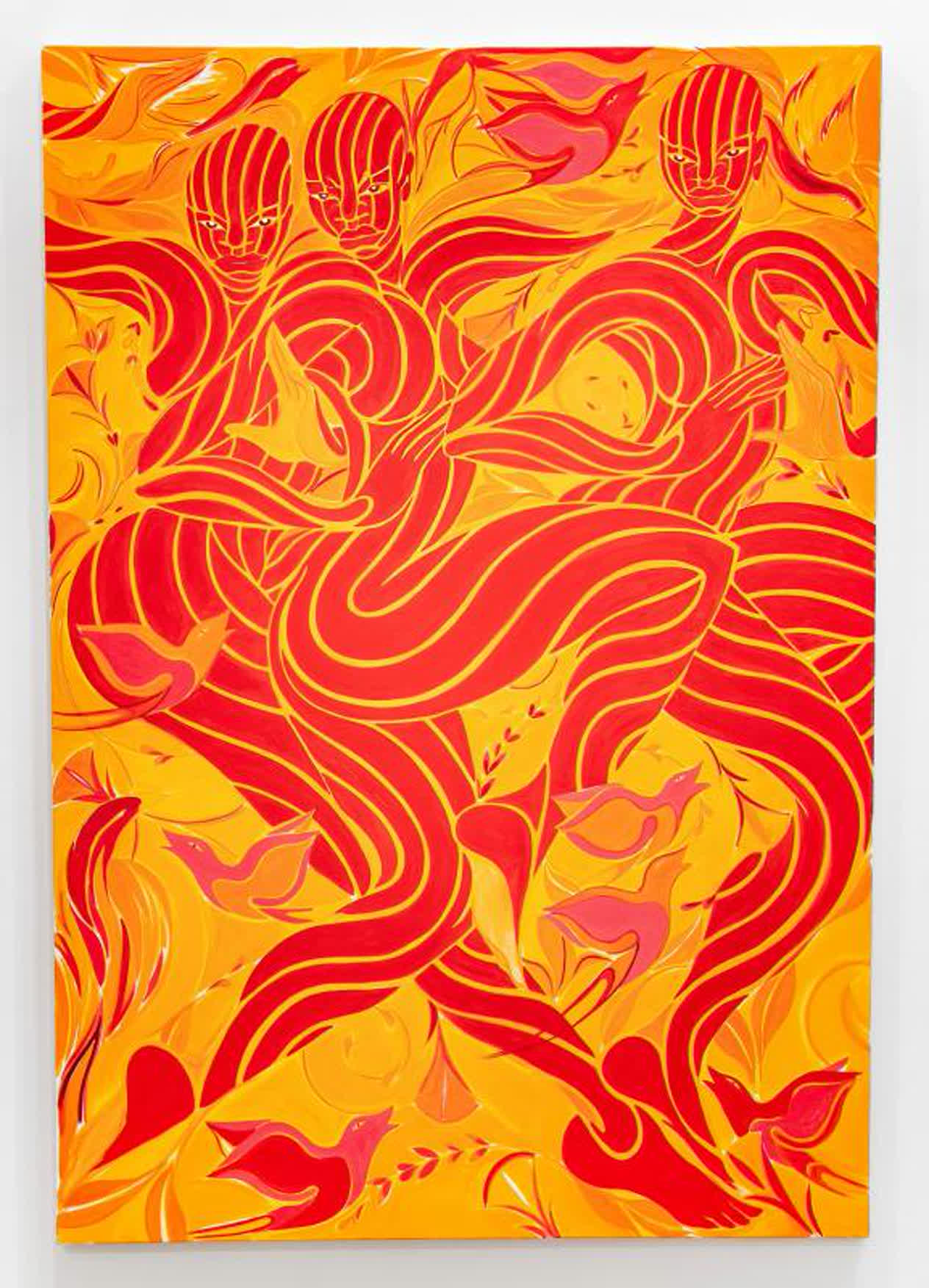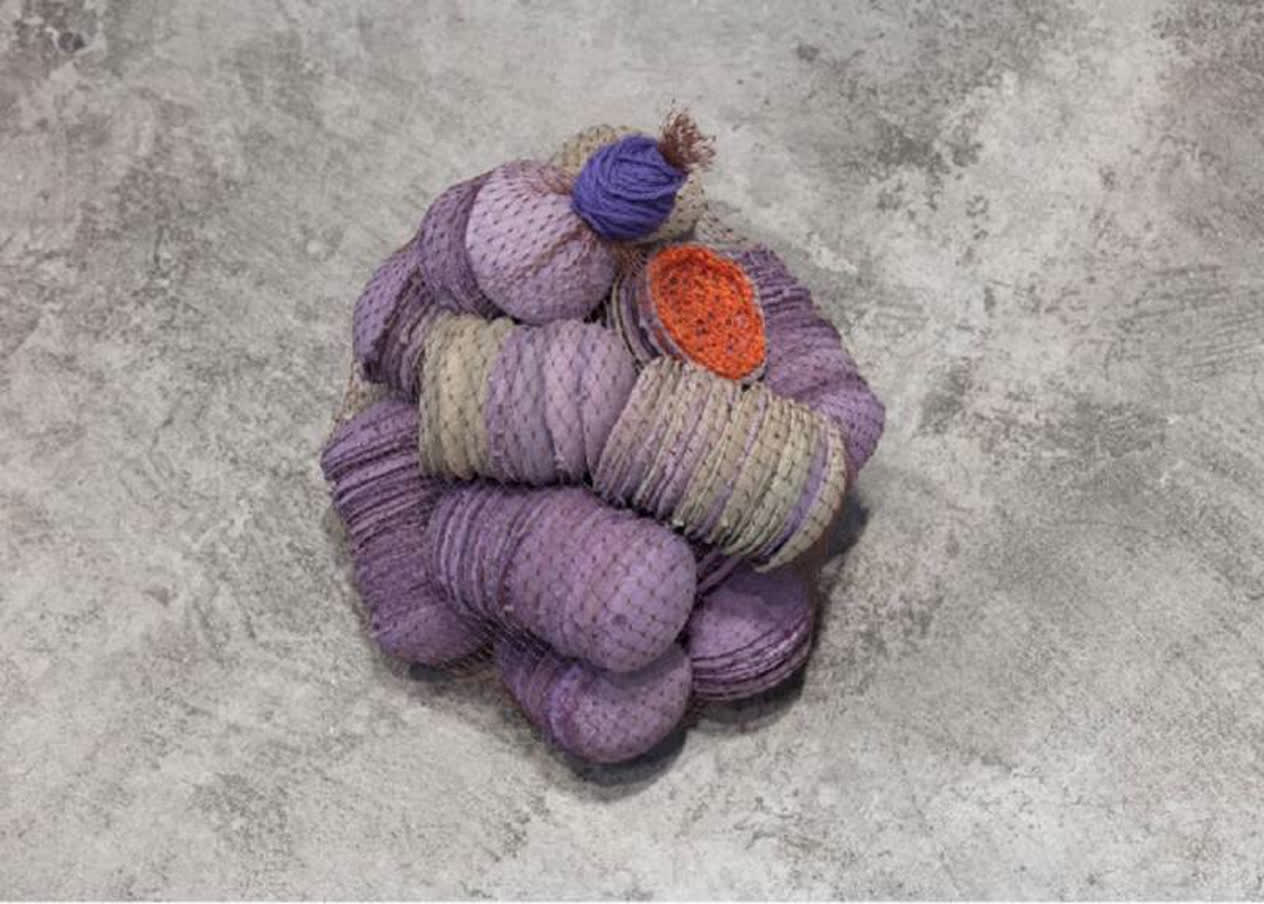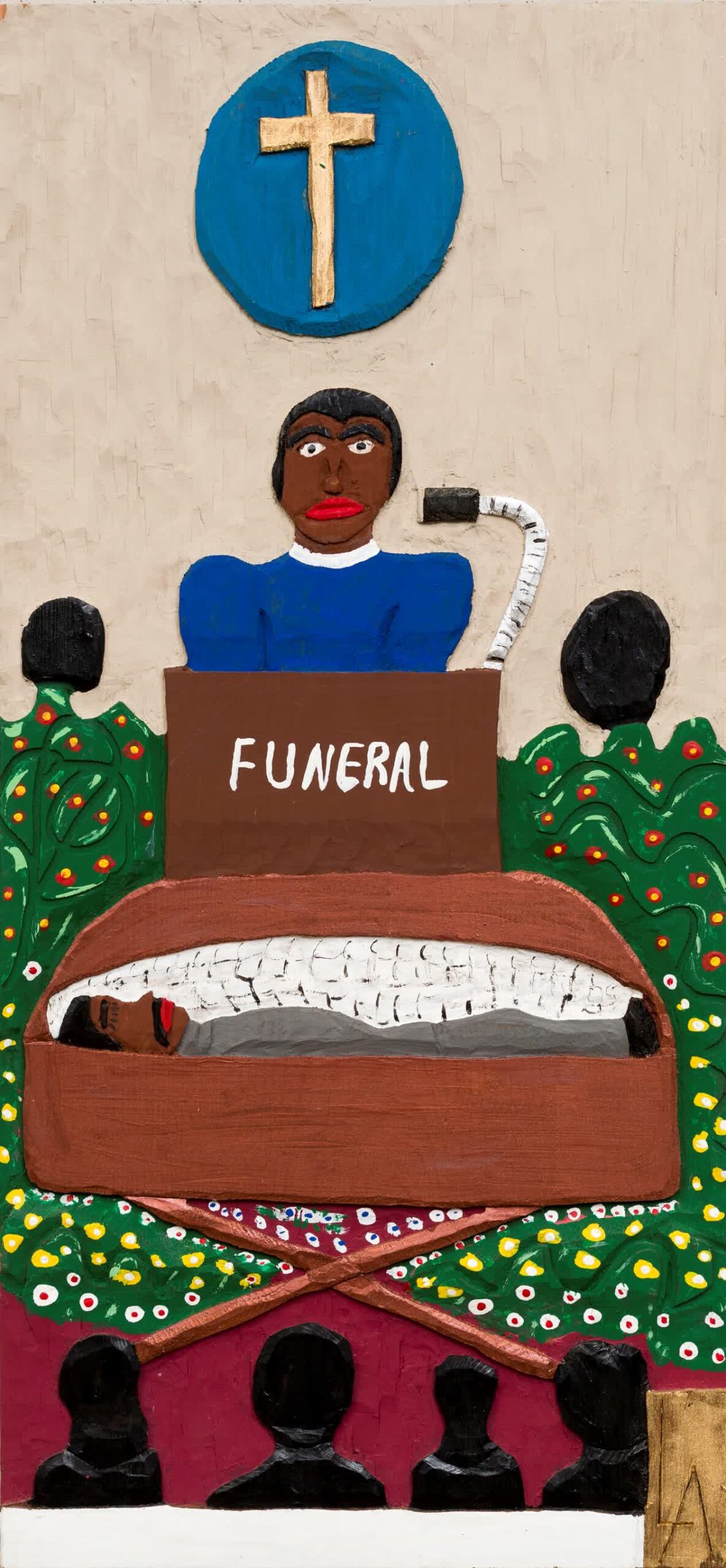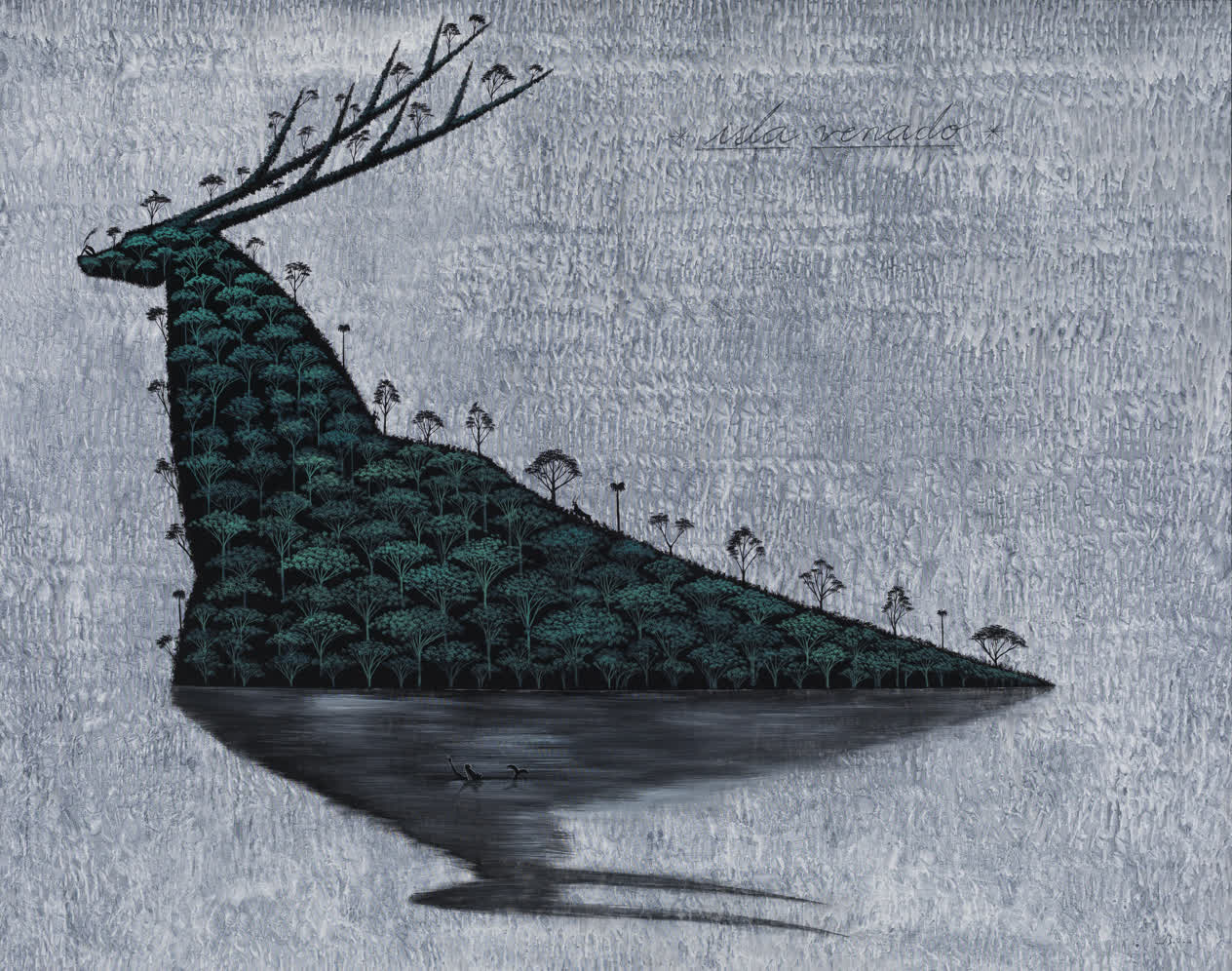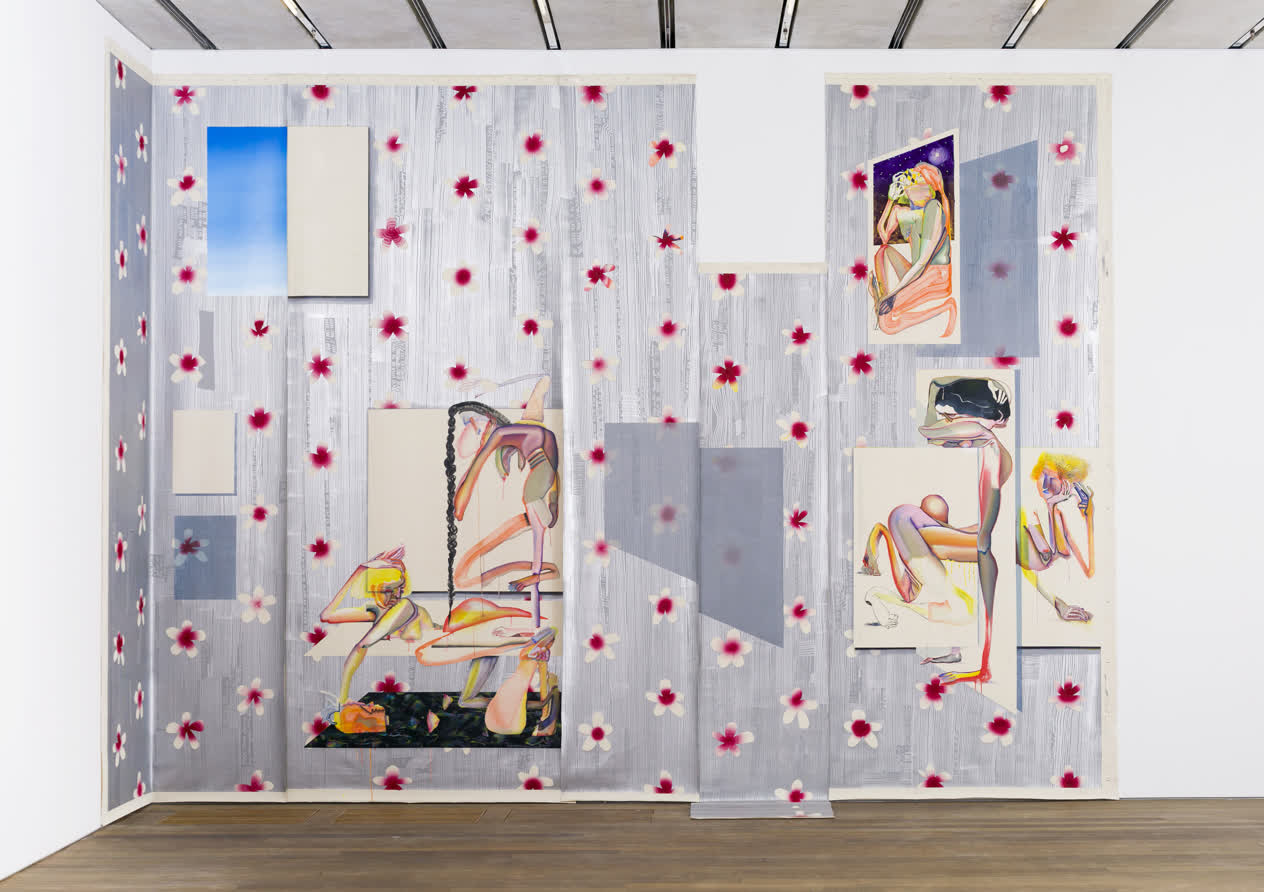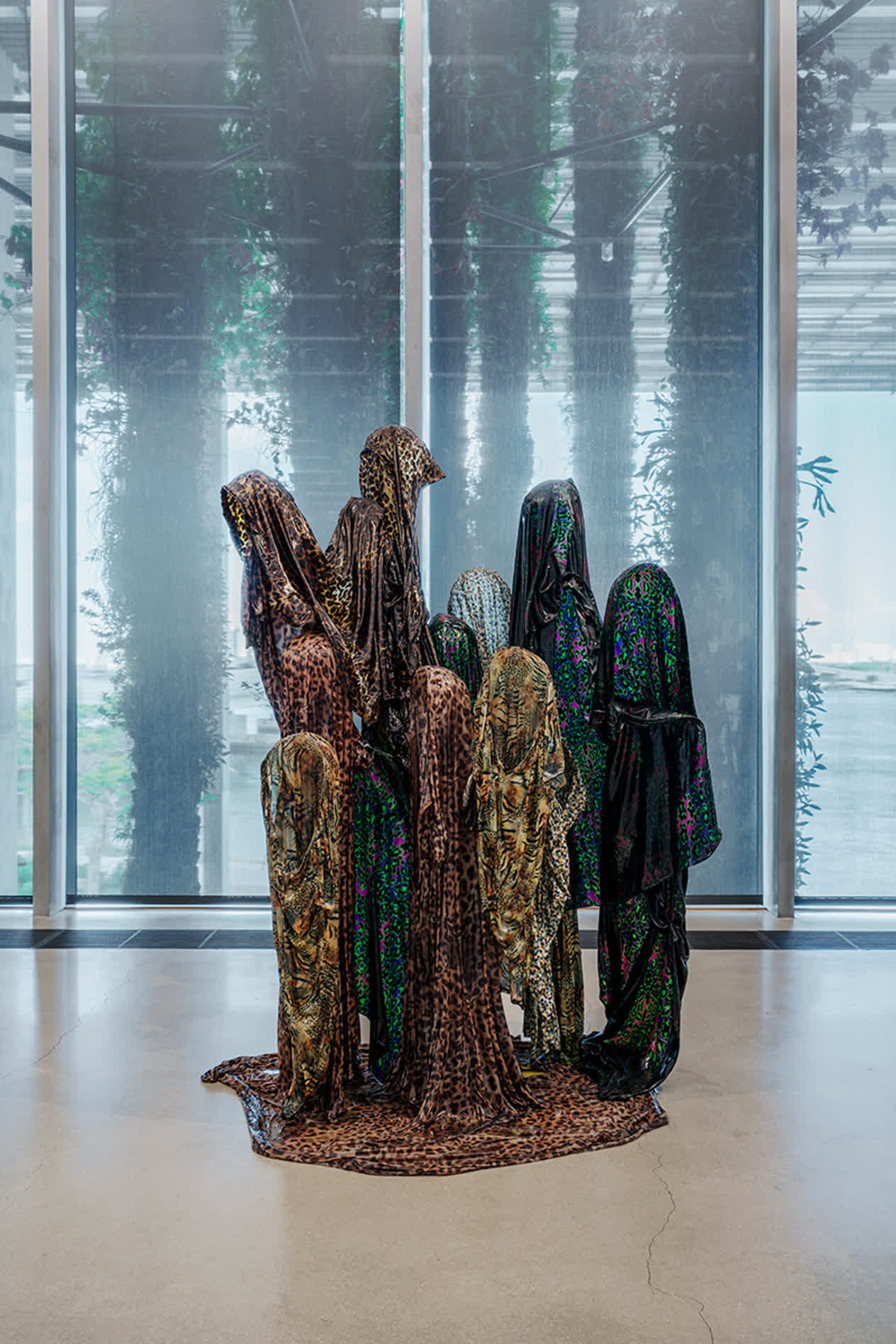Myrlande Constant Invocation for Saint Anthony 2015–19
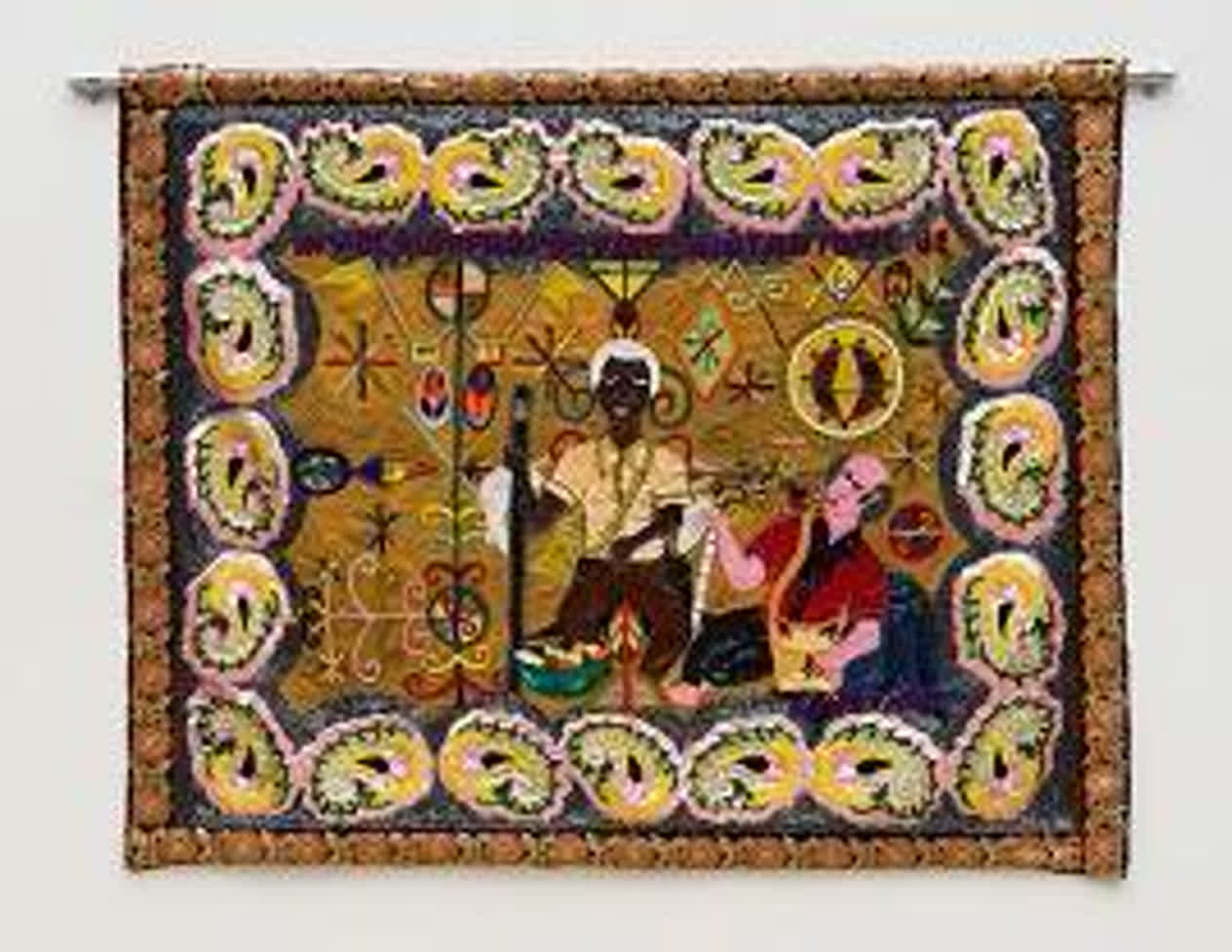
© Myrlande Constant

Identification
Title
Invocation for Saint Anthony
Production Date
2015–19
Object Number
2021.090
Credit Line
Collection Pérez Art Museum Miami, gift of Jonathan Berkenstadt
Copyright
© Myrlande Constant
https://www.pamm.org/en/artwork/2021.090
Copy artwork link
Physical Qualities
Medium
Sequins, beads, and silk on cotton
Dimensions
47 x 58 1/2 inches
Visual Description
“Invocation for Saint Anthony is a beaded fabric by Haitian artist Myrland Constant. It is made with sequins, beads, and silk on cotton fabric. It measures forty-seven inches tall by fifty-eight inches wide, sitting at about four feet tall and just short of five feet wide.
The entire surface of the Invocation for Saint Anthony is covered in hundreds of brightly colored sequins and beads, leaving little to no trace of the cotton fabric below it. The piece was inspired by drapo, or sacred sequined flags used in Vodou rituals. It features two flat figures at its center who are surrounded by various geometric symbols within an intricately embroidered frame.
One of the figures is a Black figure who directly faces the viewer. Their brown skin is speckled with various brown beads, including some that are purple too. This figure sports a head of short white hair and a cream-colored shirt that has a pale-yellow collar and short sleeves. They sit on a black tree stump with a black cane in their right hand that is as tall as they are. The figure sits with their legs wide open, and their other hand is held just above their genitals. Below, in the space between their legs, there is an oval shape colored by upward facing chevrons in orange, white, yellow, and green. Connecting to the bottom of this oval shape is the tip of a cream-colored triangle outlined in yellow. Directly in between the figure’s legs, there is an orange beaded line. This orange line bisects the oval shape below the figure and ends at the base of the triangle below that. To the left of these shapes, sits a teal-colored bowl filled with round colorful shapes suggesting a variety of fruits and vegetables that might serve as an offering.
The second figure to the right is a white person. Their skin is made with a variety of pink and white beads. They have short gray hair on the sides of their head while remaining bald on top. This figure also holds a cane in their right hand that is wrapped in a white cloth, which is indicated by a loose piece of fabric depicted dangling from the handle. This person sits cross-legged at the foot of the black figure with their back leaning on a black tree stump to the right. The stump is covered in black, gray, blue, purple, and teal beads as if iridescent water were flowing from it. This white figure wears a bright red shirt with short sleeves. The shirt has an elaborate glossy black lapel and button placket. Their black pants have delicately embroidered sequins to match. This white figure also has a pale-yellow satchel marked with three sets of black and red arrows. From the white figure’s black eyes, a line of gray colored beads connects to the figure to their left, as if their gaze were a laser beam shooting into the other’s shoulder.
The yellow ochre-colored background behind the figures contains various multicolored vèvè symbols. In Haitian Vodou, vèvè are geometrical drawings that represent the Iwa or spirits. They can vary in complexity and are typically drawn on the earthen floor using cornmeal, dry pigment, or ashes by a Vodou priest or priestess. These symbols are central to Vodou rituals, as they are meant to direct the spiritual energy associated with a particular spirit.
“






